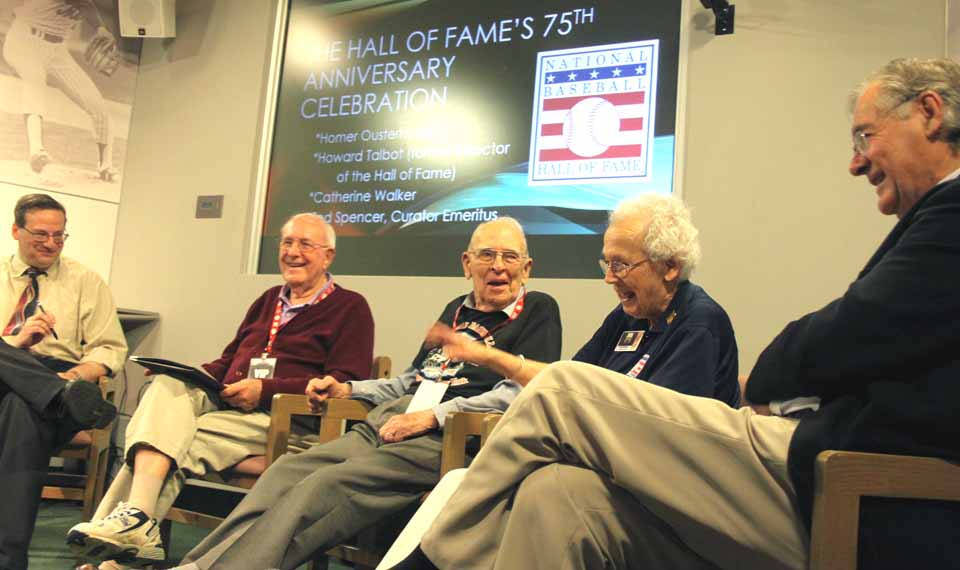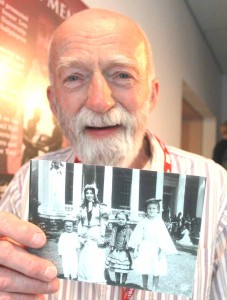Hall of Fame’s Yesteryears Recalled

By JIM KEVLIN • www.allotsego.com

COOPERSTOWN – Yesterday was today’s topic, and things have changed.
“I shouldn’t say this,” said Ted Spencer, the National Baseball Hall of Fame’s retired curator, “but my first year here” – 1982 – “I tried everything on.”
How things have become more formal and security-conscious over the years was one theme that emerged from a panel Spencer rounded out this afternoon in the Hall’s Bullpen Theater. He joined three attendees at the original 1939 Induction: Homer Osterhoudt, Howard Talbot and Catherine Walker.
Osterhoudt, then 21, and later a 30-year mail carrier in the village, had worked on the construction crew of the just-completed Hall. Talbot, 14, was home from Manlius Military Academy. Walker, then 8 and later the mother of five, was on her father’s hand most of June 12, 1939.
Two attendees from the first Induction were also in the room: Phil Bresee, of the Oneonta department store family, and Merritt Harvey of Hartwick, who was 5 and brought to the historic event by his mother and sisters.
Talbot later joined the Hall when it only had four employees – Director Bob Quinn, formerly of the Boston Braves, his secretary Helen Tyson, a girl named Roth in the ticket booth, and the custodian, Milton Shepherd.
When Spencer joined the Hall, there were 16 employees, said emcee Bruce Markusen; today, there are 80-90 year around, plus the Steele interns and other seasonal help during summers.
Spencer also revealed that it wasn’t until 2007 that it was determined that the Hall actually opened on July 3, 1938, not June 12, 1939, although the latter date was the first Induction.
The curator said he and researchers noticed a difference in two photos that were supposed to be from 1939. One of them showed the building next door, the Honolulu Conservatory of Music, that wasn’t there in photos of the actual Induction; that was the tipoff.
Over the years, Coopertown has changed, too. Osterhoudt and Walker lamented the loss of the varied business district, the clothing stores, markets and restaurants. “It seemed more like our home than today,” Walker said.
Still, Talbot recalled Ford Frick, former National League president, saying, “One of the things I like about this weekend in Cooperstown is it’s a small town. It’s not commercial; it’s a small town.”
Still, some big city vices snuck in, even to the Hall. Talbot recalled how Joe DiMaggio’s uniform was hung on a hanger in the middle of the display room, with a cap on a shelf above. One morning, the cap was gone. Happily, the Hall had a second cap, but from then on display it and the uniform behind a locked mesh.
Later, it was discovered that pieces of the uniform had been snipped off as souvenirs by over-avid fans, and displays generally were covered with plexiglass.

